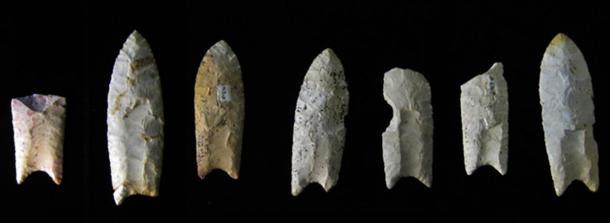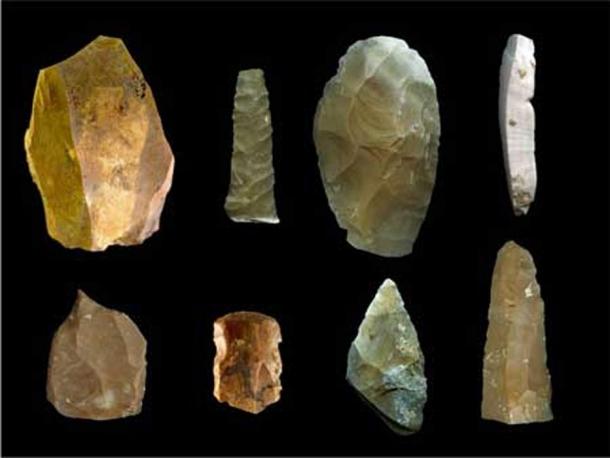16,700-Year-Old Tools Found in Texas Change Known History of North America
Archaeologists in Texas have found a set of 16,700-year-old tools which are among the oldest discovered in the West. Until now, it was believed that the culture that represented the continent’s first inhabitants was the Clovis culture.
However, the discovery of the ancient tools now challenges that theory, providing evidence that human occupation precedes the arrival of the Clovis people by thousands of years.
According to the Western Digs , archeologists discovered the tools about half an hour north of Austin in Texas, at the site called Gault. They were located a meter deep in water-logged silty clay. The site contained more than 90 stone tools and some human remains including fragments of teeth.

The discovery changes everything people have been taught about the history of North America – that is, that the Clovis culture represented the first inhabitants of the continent. The results of the research were presented at the meeting of the Plains Anthropological Conference in 2015.

In the 1990s, at the same excavation site near Austin, archeologists unearthed tapered-oval spear heads dating back 13,000 years. Those times, they believed, belonged to the oldest widespread culture of the continent. However, the most recent discovery proves that the pre-Clovis inhabitants came to North America at least three millennia earlier.
The Gault site was identified in the 1920s. However, researches didn’t accomplish any significant discovery until the 1990s. In 2012, researchers were interested in finding new artifacts related to the Clovis culture.
However, they found something even much more impressive – the enamel caps of four adjacent teeth from a young adult female. It allowed them to use the radiocarbon dating method. The results were surprising.
They revealed that the tools and artifacts, found in the same layer as the teeth, which includes more than 160,000 stone flakes left over from the tool-making processs, are evidence of the oldest known inhabitants of America.
To finally confirm how old the artifacts are, Dr. D. Clark Wernecke, director of the Gault School of Archaeological Research, and his colleagues submitted 18 of the artifacts to a lab for optically stimulated luminescence dating. It is a process of analyzing tiny grains in the soils to reveal when they were last exposed to sunlight.
The results proved that the artifacts were up to 16,700 years old. The tools also showed different features to the Clovis tools, which are distinctively shaped.

Many aspects of the technology of this mysterious tribe, like how they made biface blades, were very similar to the Clovis. It seems that the blade technology did not change a lot, the Clovis only improved it. It suggests a mysterious connection between the two cultures.
The discovery brought a lot of important information, including the conclusion that the diversity of artifacts uncovered at the Gault site shows that the continent’s earliest peoples were not a static or monolithic group. Moreover, they shed light on the history of human migration.
The discovery proved that the first peoples in the Americas were more similar to modern people, than we believed. According to Wrencke they were “intelligent, inventive, creative — and they found ways to adapt to a rapidly changing world.”
April Holloway from Ancient Origins reported in 2014 about different evidence of pre-Clovis inhabitants in America. She wrote:
”A fisherman inadvertently dragged up one of the most significant pieces of evidence for the existence of ancient inhabitants of North America prior to the Clovis people, who walked the land some 15,000 years ago.
A small wooden scallop trawler was dredging the seafloor off the coastline of Chesapeake Bay, when he hit a snag. When he pulled up his net, he found a 22,000-year-old mastodon skull and a flaked blade made of a volcanic rock called rhyolite.
A report in says that the combination of the finds may suggest that people lived in North America, and possibly butchered the mastodon, thousands of years before people from the Clovis culture, who are widely thought to be the first settlers of North America and the ancestors of all living Native Americans.
The mastodon and stone tool finding further supports the perspective that there were other inhabitants of America that preceded the Clovis. The ancient fossil and tool were first hauled off the seafloor in 1974, and were donated to Gwynn’s Island Museum in Virginia, where they sat unnoticed for four decades.
However, scientists have now realised the significance of the items after Dennis Stanford, an archaeologist with the Smithsonian Institution in Washington, D.C., carried out radiocarbon dating on the mastodon tusk and found it was more than 22,000 years old. While the stone tool cannot be dated, the characteristics of the artifact suggest it is also of the same age.”
